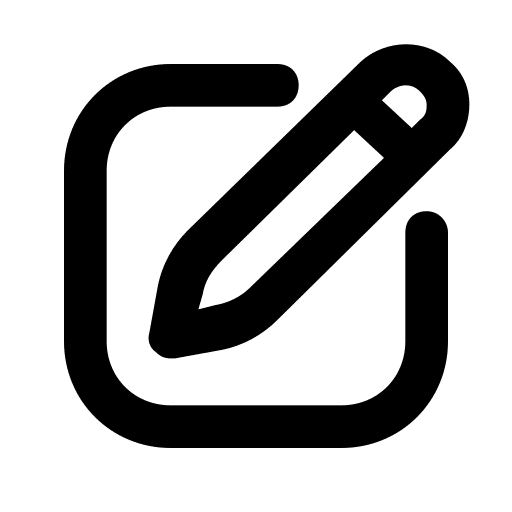What is a Resume?
Although this may seem like a basic question, it is one that gets asked frequently and by college students, recent graduates, and career professionals.
When asking what is a resume, the question is typically geared more towards what information is needed in a resume and how to effectively write one.
In its simplest terms, a resume is a document, typically one to two pages in length, which itemizes your work experience and educational history.
Resumes have evolved in recent times and most, if not all, employers require one when submitting an application.
Due to the increase in applications occurring over the internet, many employers have begun to utilize an applicant tracking system software.
This software looks to analyze a candidates or applicants resume for certain keywords and phrases.
When these keywords or phrases are identified, the applicants resume will be sent to the recruiter or hiring manager.
Writing and creating a successful resume requires an applicant to use keywords and phrases which entices the employer to invite them to an interview.
The interview process typically begins with an on-call interview and, if successful, an in-person interview.
Resumes are often a competitive space and require a candidate to use a clean, modern format.
The format should be easily read and understood.
As most recruiters spend just 6-seconds reading a resume, it is imperative to format the resume in a manner that can be easily understood quickly.
The Through-and-Through of a Resume
The ultimate purpose of a resume is to land an interview and be offered the job position.
As online applications have gained popularity, employers are often inundated with resumes from qualified and unqualified applicants.
This places employers at a difficult intersection, where they are many times forced to utilize an applicant tracking system to better assist them in reviewing incoming resumes.
When writing or creating your resume, it is ideal to use a modern, clean format.
The most often used format is one in reverse chronological order, where your latest work experience is placed first.
You should include all relevant work experiences within a ten-year period on your resume.
However, simply indicating previous work experience on your resume is no longer sufficient.
Excellent resumes provide additional detail and information on what you completed at each position.
Applicants should look to provide actionable information and impact beneath each work experience.
In addition, applicants should look to place certain keywords and phrases mentioned in the job posting within their resume.
An online job posting which mentions expertise in SQL as a requirement will typically want any applicant to have that experience on their resume.
However, you should never lie or exaggerate your experience.
Doing so can disqualify you from the position and ultimately blacklist you from the employer.

Additional Information Found on a Resume
In addition to including work history and education, applicants should look to include a brief work summary or objective on their resume.
This should be a brief, 2-3 sentences, indicating their work experience and ideal career goals.
The best work objectives are brief and direct.
They are an introduction of your work history and your ultimate career goals.
In addition to a work objective, many applicants find placing additional skills or achievements as helpful.
These sections are typically placed at the end of the resume, beneath the education section.
The additional skills and achievements section is useful for providing the employer with a list of hard skills which you’ve gained throughout your career or in school.
Achievements are also a big field on a resume as it shows employers that you have been recognized within your company or industry.
These can include employee of the month awards, top salesperson awards, and other internal, company specific awards.
Lastly, a candidate should always include their full name, home address, email address, and phone number on their resume.
This field and information is typically found at the top of the resume and should be easily located.
This information will help employers reach out to you if selected for an interview.
Different Kinds of Resumes
Although we’ve found that chronological resumes work best, there are a plethora of different resume formats.
By-far, the three most popular formats are:
- Chronological Resumes – provides the work history in a reverse chronological order, with the most recent position first.
This type of resume focuses on the date of the work experience.
- Functional Resumes – functional resumes look to provide information by focusing on skills and accomplishments.
It divides a candidate’s qualifications into categories and does not place focus on dates.
- Hybrid Resumes – hybrid resumes use a mix of both chronological and functional resumes.
This allows candidates to pick-and-choose which format works best, depending on the experience.

Why Are Resumes Important?
Resumes are perhaps the most important document an applicant has.
They are the first document and interaction between an applicant and an employer.
As resumes have matured, and become more uniform, employers have come to expect certain levels of information be provided within a resume.
Resumes are important because they are an applicant’s best shot at making a great first impression.
As an applicant is typically applying for a position where they do not know the hiring manager, this is their chance to show off their skills and qualifications.
The resume should be sharp, professional, and modern.
It should include all relevant work experience and achievements and should be less than one-page in length.
The resume should be updated consistently and should be treated as a living document.
Applicants should also look to update their resume for each-and-every job application they send.
Additional Documents Needed
In addition to a resume, candidates should have cover letters written for each job application.
A cover letter is an applicant’s introduction of themselves to the employer.
Cover letters are meant to be written in paragraph formats and is meant to be used as a selling point to the employer.
Cover letters and resumes, while similar in some respects, differ greatly in format.
Whereas resumes are meant to be brief and list out key achievements and accomplishments, cover letters are more in-depth.
Cover letters are meant to be more personal, with the applicant speaking to the employer on why they want the position.
Although cover letters are less used and less common than resumes, they are an invaluable part of the applicant process.
Successful applicants will typically include both documents when submitting their application to increase their chances in landing an interview.








